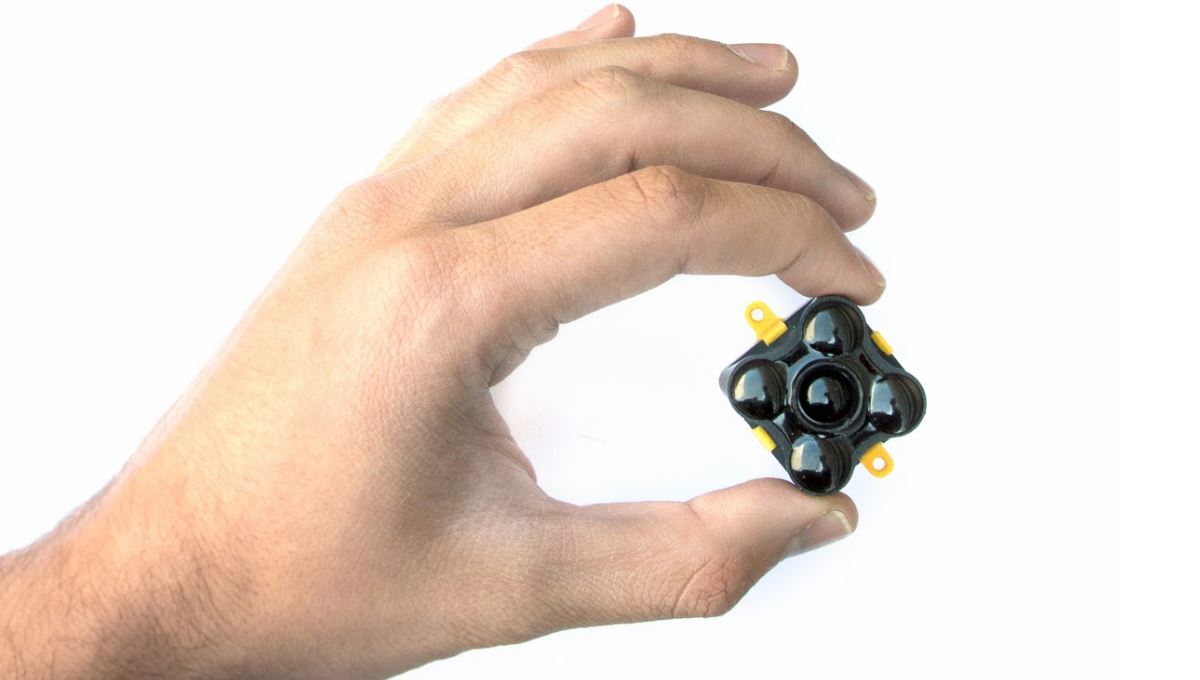TeraBee, the company that designs, develops and produces the TeraRanger brand of sensors and solutions, recently announced a new long-range, and low-cost sensor for many different applications, including drones.
Designed for Robotics, Automation and the Internet of Things (IoT), the new TeraBee sensor, TeraRanger Evo, is lightweight, measuring 29x29x22 mm, and weighing only 9g (12g with communication board). It can read the environment at up to a 60 meter range, and it uses LED technology instead of laser - similar to last year’s TeraRanger One sensors.With no pre-calibrations, compensations or data translations needed, the sensor is easy to use, as it only needs to be plugged in and it’s ready to work. Also, the black-colored optical sensor module easily attaches to a yellow-colored backboard for power management and communications. TeraBee provides three connection types for the backboard: UART/I2C, USB, or a custom one, such as WiFi, Sigfox, and LoRa, made on request.Greg Watts, Commercial Manager at Terabee explains, “With this sensor we’ve taken both ease of use and performance to another level. We’ve always had strong demand for our sensors from the drone community, so we have made sure the sensor is easy to mount on drones and setup and use with popular autopilots such as Pixhawk, for example.”TeraBee claims that the near-infrared LED technology used with the sensor is better for drones than laser. The technology provides TeraRanger Evo with a 2 degree field-of-view, meaning that instead of measuring distance based on a very small point of light, the sensor measures over an area.“For many drone applications”, comments Greg Watts, “this is a significant advantage, allowing you to detect smaller targets, or hazards, that a laser might miss. You also benefit from a more stable datastream in fast changing conditions, such as flight above crops, where the laser might measure the distance to the ground, and then the crop and then the ground again, all in close succession. These are typical of the use cases where customers tell us they get better results from TeraRanger than they did from their lasers.”The TeraRanger Evo is now available. It costs around $180, including the backboard, with the potential for lower pricing in volumes. TeraBee also released an instruction manual on how to connect the sensor to PixHawk Autopilots.Subscribe
The information you submit will be stored and used to communicate with you about your interest in Commercial UAV News. To understand more about how we use and store information, please refer to our privacy policy.
January 5, 2018
TeraBee Releases a New Low-cost & Long-range Sensor
















Comments